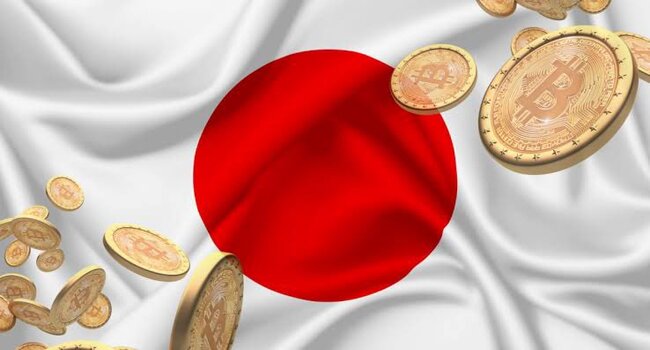Optimism spikes for a Thursday summit between Trump and Xi Jinping
Trump is expected to meet Chinese President Xi Jinping this Thursday in Gyeongju, South Korea, during the Asia-Pacific Economic Cooperation (APEC) summit, despite rising tensions between the two countries.
This will be the first face-to-face between the two leaders during Trump’s second term, although they’ve already spoken twice by phone, the latest one being in September. Markets are on edge. Prediction site Kalshi now shows a 93% chance the meeting takes place this week, with over $6 million wagered on it.
 Source: Kalshi
Source: Kalshi
The stakes are high. This comes after weekend negotiations between Treasury Secretary Scott Bessent and Chinese Vice Premier He Lifeng in Malaysia. Bessent said on NBC’s Meet the Press that they had reached “a very substantial framework” that he believes will stop Trump’s planned tariff hike and make space for deeper talks.
That’s big, because Trump’s threat of a new 100% tariff on Chinese imports is still scheduled to go into effect on November 1, a move that could bring top-line duties to over 150% on some goods. But Bessent now says he doesn’t expect that to happen, citing the more positive tone from both sides.
Talks target tariffs, rare earths, oil and semiconductors
The Thursday summit will begin in Gyeongju, which is 11 hours ahead of Washington. So while the meeting starts Thursday morning in Korea, it will begin Wednesday night in D.C.. The summit follows private talks in Malaysia where both sides described the outcome as a “basic consensuses on arrangements,” according to Chinese state media.
The focus won’t just be on tariffs. Officials from both countries have confirmed that China’s rare earth restrictions and its continued imports of Russian oil will be major points of tension in the conversation.
Washington is growing more frustrated with Beijing’s chokehold on the rare earth market, and lawmakers are pressuring the administration to respond.
The two sides are also expected to touch on semiconductor export bans, Chinese soybean purchases, fentanyl trafficking, and military shipbuilding cooperation — though it’s unclear how far talks will go on any of these.
And then there’s Taiwan. A senior official traveling with Trump said there are no plans to raise the issue unless China moves first. Still, Trump made his view known before leaving the U.S., warning:
Trade ‘truce’ may hold for now, but risks remain
Terry Haines from Pangaea Policy said Sunday that these “nice noises” could boost markets short term, but long-term outlooks remain shaky.
His take? The two sides may have agreed to keep the truce alive for a few more months, but there’s no sign of lasting progress. The deeper problems (tech bans, resource supply chains, and geopolitical flashpoints) aren’t going anywhere.
Chinese state media issued its own line Sunday: “The two countries gain from cooperation and lose from confrontation.” But the facts on the ground suggest little trust on either side.
Trump’s visit to South Korea comes after a weekend stop in Malaysia, where he attended a bilateral session with Malaysia’s prime minister and joined the ASEAN leaders’ meeting. The Asia trip is part of a broader White House push to build stronger ties in the region while keeping pressure on Beijing.
Now all eyes are on Gyeongju, and whether the Trump-Xi summit delivers anything real — or just more talk.
If you're reading this, you’re already ahead. Stay there with our newsletter.
You May Also Like

Humans Are the Improbability Drive AI Can’t Copy

JPYC Launches Japan’s First Yen-Denominated Stablecoin to Drive Digital Payment Growth
Highlights: Japan’s JPYC Inc. launches yen-based stablecoin to modernize payments and strengthen its position in digital finance. Analysts predict JPYC will accelerate Japan’s transition toward a fully digital economic ecosystem. The stablecoin seeks to enhance transaction efficiency and support blockchain-based business growth. On October 27, Japanese fintech firm JPYC Inc. officially announced the launch of the country’s first stablecoin pegged to the Japanese yen, JPYC. It marks a small but meaningful step in a country where most consumers still rely on traditional payment methods such as cash and credit cards. The rollout follows approval from Japan’s Financial Services Agency. Growing institutional interest also signals a shift in the country’s long-standing cash-based economy. JPYC is fully backed by yen deposits and Japanese government bonds. It complies with Japan’s Payment Services Act and maintains 100% reserves. The stablecoin is pegged 1:1 to the Japanese yen and operates on major blockchains such as Ethereum, Avalanche, and Polygon. CEO Noritaka Okabe said the company wants to support innovation by offering startups lower transaction and settlement costs. He added that better global connectivity could help everyone and that the company is open to new partnerships. JPYC Inc announced the official launch of its yen-denominated stablecoin, JPYC, along with the release of its dedicated issuance and redemption platform, JPYC EX. The stablecoin is pegged 1:1 to the Japanese yen and fully backed by bank deposits and government bonds. Initial… — Wu Blockchain (@WuBlockchain) October 27, 2025 User Access and Growth Targets The company said users can buy JPYC on the JPYC EX platform after verifying their identity with the My Number card, Japan’s national ID. JPYC Inc. plans to reach 10 trillion yen ($65.4 billion) in circulation within three years. It also aims to add more blockchains and partner with more businesses. For comparison, USDT, the largest stablecoin, has about $183.2 billion in supply. Several Japanese firms plan to integrate JPYC into their operations, the company confirmed. Fintech developer Densan System is creating payment systems for retail and e-commerce platforms featuring JPYC. Meanwhile, Asteria will add JPYC support to its enterprise data integration software, used by more than 10,000 businesses. Additionally, crypto wallet provider HashPort plans to enable JPYC transactions on its platform. With its launch, JPYC becomes the first major stablecoin not tied to the U.S. dollar but backed by a strong economy. This move may change how money flows across Asia. Like U.S. stablecoins that increased Treasury demand, Japan’s version could boost JGB demand and add diversity to the market. The global stablecoin market is now over $286 billion, with nearly all linked to the dollar. Digital Payment Shift in Japan Japan’s use of digital payments has grown, which shows a big shift from cash to electronic payments. JPYC aims to speed up this growth by offering a simple and low-cost digital option. The company will waive transaction fees at first and earn from interest on Japanese government bond holdings. Meanwhile, Japan’s three major banks, Sumitomo Mitsui, Mitsubishi UFJ, and Mizuho, plan to launch a joint yen-based stablecoin system on October 31 for corporate settlements through MUFG’s Progmat platform. Japan’s Major Banks Launch Yen-Backed Stablecoin Partnership Japan’s financial sector is taking significant steps toward integrating cryptocurrency technologies, with three major banks planning to jointly issue a yen-pegged stablecoin. This initiative…… pic.twitter.com/WR99AIb4ah — Crypto Breaking News (@CryptoBreakNews) October 17, 2025 Bank of Japan Deputy Governor Ryozo Himino recently said that stablecoins could become an important part of the global payment system and may partly replace traditional bank deposits. Experts believe yen-backed tokens could grow in use over the next two to three years. They may also play a role in areas like decentralized finance, tokenized assets, and cross-border payments. eToro Platform Best Crypto Exchange Over 90 top cryptos to trade Regulated by top-tier entities User-friendly trading app 30+ million users 9.9 Visit eToro eToro is a multi-asset investment platform. The value of your investments may go up or down. Your capital is at risk. Don’t invest unless you’re prepared to lose all the money you invest. This is a high-risk investment, and you should not expect to be protected if something goes wrong.
